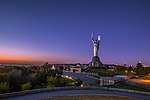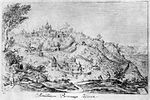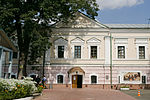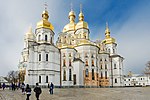National Museum of the History of Ukraine in the Second World War

The National Museum of the History of Ukraine in the Second World War (Ukrainian: Музей історії України у Другій світовій війні) is a memorial complex commemorating the German-Soviet War located in the southern outskirts of the Pechersk district of Kyiv, the capital of Ukraine, on the picturesque hills on the right-bank of the Dnipro River.The museum was moved twice before ending up in the current location where it was ceremonially opened on May 9 (Victory Day) in 1981 by the Soviet leader Leonid Brezhnev. On June 21, 1996, the museum was accorded its current status of the National Museum by the special decree signed by Leonid Kuchma, the then-President of Ukraine. It is one of the largest museums in Ukraine (over 300 thousand exhibits) centered on the 62-meter tall Motherland statue, which has become one of the best-recognized landmarks of Kyiv. The museum has been attended by over 21 million visitors.
Excerpt from the Wikipedia article National Museum of the History of Ukraine in the Second World War (License: CC BY-SA 3.0, Authors, Images).National Museum of the History of Ukraine in the Second World War
Koziatynskyi Lane, Kyiv Zvirynets
Geographical coordinates (GPS) Address Website Nearby Places Show on map
Geographical coordinates (GPS)
| Latitude | Longitude |
|---|---|
| N 50.426634 ° | E 30.5636 ° |
Address
Національний музей історії України у Другій світовій війні. Меморіальний комплекс
Koziatynskyi Lane
01015 Kyiv, Zvirynets
Ukraine
Open on Google Maps










